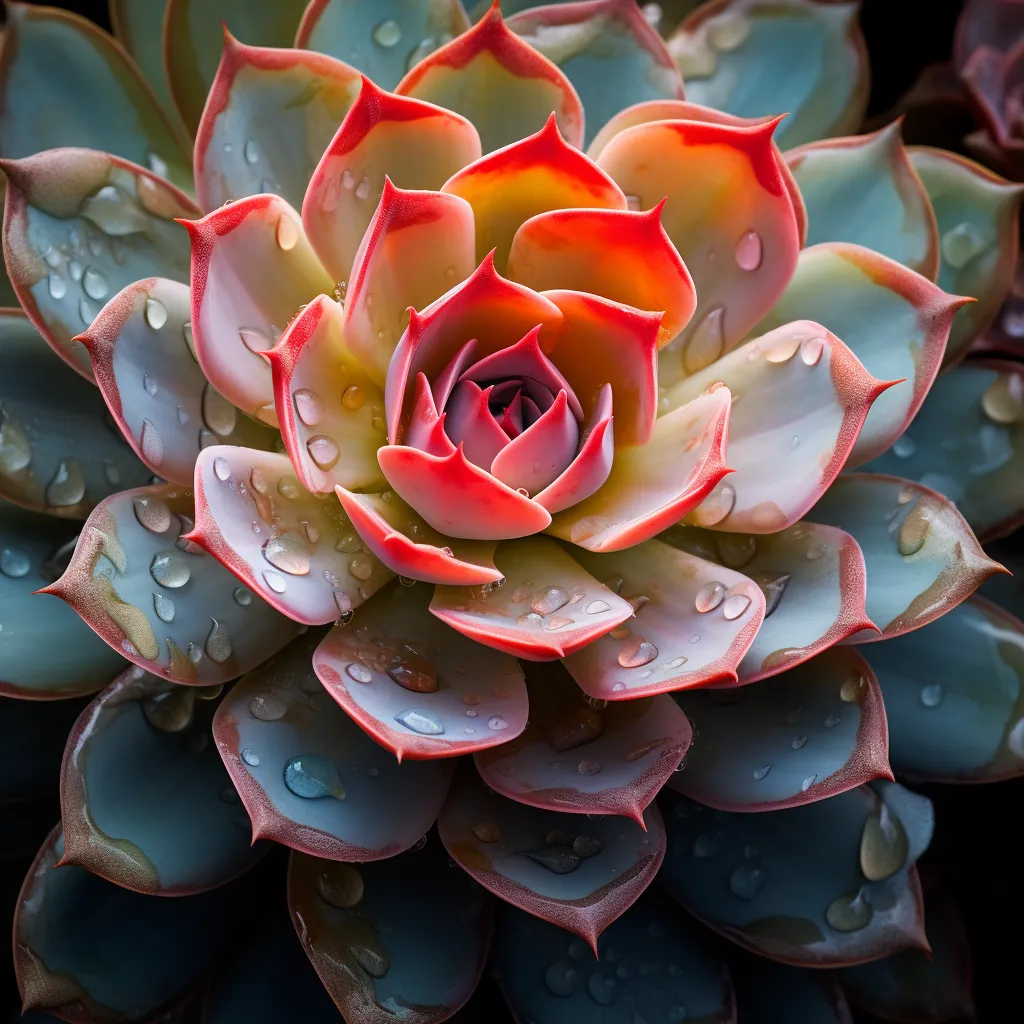Story of Day :
Contents
Echeveria derenbergii (Painted Lady) Plant Care Tips
Welcome to another exciting blog post on all things gardening! Today, we are going to dive into the world of Echeveria derenbergii, also known as the Painted Lady.
This stunning succulent is a favorite among plant enthusiasts for its captivating appearance and low-maintenance care needs.
In this article, we will explore some useful tips and tricks to help you keep your Echeveria derenbergii thriving and looking gorgeous.
Understanding Echeveria derenbergii
Echeveria derenbergii is a small succulent native to Mexico.
It features compact rosettes of blue-green leaves with delicate pink edges that resemble the wings of a painted lady butterfly – hence its charming common name.
These rosettes grow up to 4 inches wide and produce slender flower stalks with yellow or orange bell-shaped blooms.
Light Requirements

Like most succulents, Echeveria derenbergii thrives in bright light conditions.
Ideally, it should receive at least six hours of direct sunlight per day.
However, intense afternoon sun can scorch its delicate leaves.
Therefore, providing it with filtered or indirect light during these hours is advisable.
- Place your Painted Lady near a south-facing window or in an area where it can receive ample sunlight throughout the day.
- If you notice stretching or elongation of stems between leaves (etiolation), it’s an indication that your plant isn’t getting enough light.
- In case natural light is insufficient indoors, consider supplementing with artificial grow lights specifically designed for indoor plants – especially during winter months when daylight hours are shorter.
Soil and Watering
Echeveria derenbergii prefers well-draining soil to prevent root rot, which can be fatal for succulents.
A blend of potting mix formulated for succulents or cacti with added perlite or coarse sand works well.

- Water your Painted Lady thoroughly but infrequently.
Allow the soil to dry out almost completely between waterings.
- During summer, when the plant is actively growing, watering once a week should suffice.
Reduce the frequency during winter months as it goes into dormancy.
- Avoid overwatering as it can lead to root rot and other fungal diseases.
Always check if the top inch of soil is completely dry before watering again.
Temperature and Humidity
Echeveria derenbergii thrives in moderate temperature conditions like those found in most homes:
- Ideal temperature range: 65°F (18°C) to 80°F (27°C).
- During winter, protect your plant from drafts near windows or doors that may cause cold stress.
- This succulent appreciates low humidity levels; therefore, avoid placing it in areas where humidity is high such as bathrooms.</lI?

Fertilizing Echeveria derenbergii
Succulents like Echeveria derenbergii do not require frequent fertilization but benefit from occasional feeding during their active growth period in spring and summer:
- A balanced liquid fertilizer diluted to half strength every four weeks will provide essential nutrients for healthy growth.
Freeze fertilization during dormancy periods – autumn and winter.
Propagation

One of the exciting aspects of Echeveria derenbergii is its ability to propagate easily, making it a fantastic plant for beginners:
- Succulents can be propagated through stem cuttings or leaf cuttings.
- Stem cuttings: Take a stem cutting and allow it to callus over for a few days before planting it in well-draining soil.
Keep the soil lightly moist until roots develop.
- Leaf cuttings: Gently remove a healthy leaf from the base of the rosette, let it dry out for 2-3 days until calloused, then lay it on well-draining soil.
Water sparingly until new rosettes form.
Pest and Disease Control
Echeveria derenbergii is generally resistant to pests and diseases; however, you should keep an eye out for common succulent problems:
- Mexican twin-spot moth larvae (Scrobipalpa atriplicella) can cause damage by feeding on leaves.
Use organic insecticides or manually remove affected leaves if necessary.
</lI? - Symptoms like mushy leaves or black spots may indicate root rot caused by overwatering.
Remove affected parts and adjust your watering routine accordingly.
- Give your Painted Lady plenty of bright light but protect it from intense afternoon sun.
- Use well-draining soil and water sparingly, allowing the soil to dry out between waterings.
- Maintain moderate temperature and humidity levels in your home.
- Fertilize during active growth periods and propagate with ease.
</UL?
In Conclusion
Echeveria derenbergii (Painted Lady) is an enchanting succulent that adds beauty and charm to any indoor garden.
By following these care tips, you will ensure your plant thrives in optimal conditions:
Keep an eye out for pests and diseases, addressing any issues promptly.
</UL?
By following these guidelines, you can enjoy a thriving Echeveria derenbergii that will continue to delight you with its stunning foliage for years to come.
Happy gardening!</p